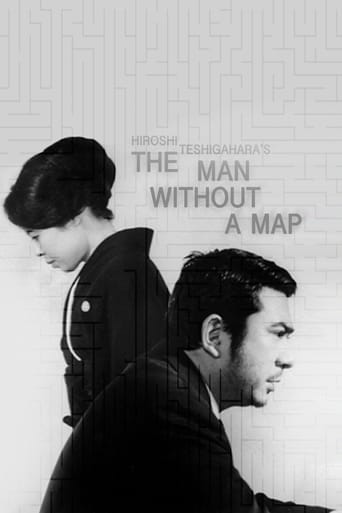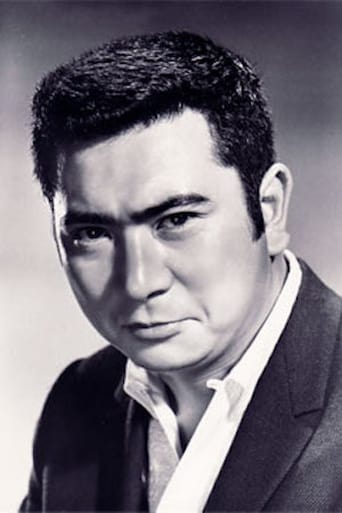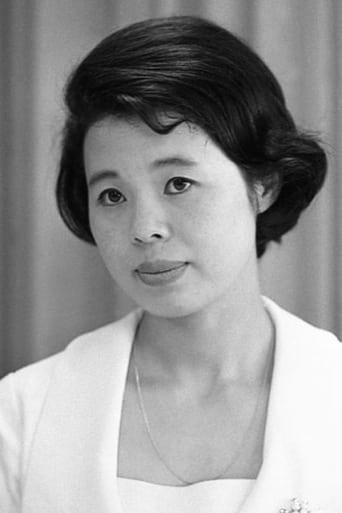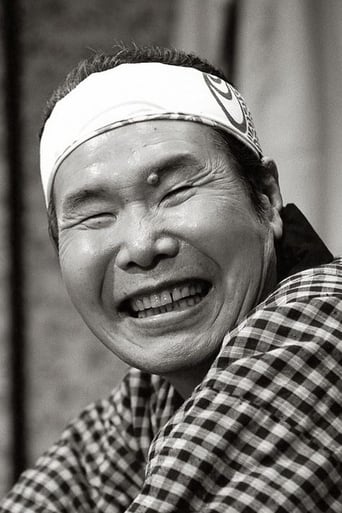

The Man Without a Map (1968)
A private detective is hired to find a missing man by his wife. While his search is unsuccessful, the detective's own life begins to resemble the man for whom he is searching.
Watch Trailer
Cast


Reviews
From my favorite movies..
Great movie! If you want to be entertained and have a few good laughs, see this movie. The music is also very good,
The movie's neither hopeful in contrived ways, nor hopeless in different contrived ways. Somehow it manages to be wonderful
This is a dark and sometimes deeply uncomfortable drama
This is the last out of four collaborations between director Hiroshi Teshigahara, writer Kobo Abe and composer Toru Takemitsu, but it's never discussed as much as the previous three movies are. This one is in CinemaScope and in color (with a different DP, too), and more confusing than any of them, so I guess fewer people remember it because it isn't quite like the preceding trilogy, even though it tackles the same topics of identity and individualism in the modern world.The Man Without a Map is based on Kobo Abe's novel The Ruined Map, although the movie likes to call itself The Man Without a Map, in English. Yes, this is the first Japanese '60s film I've ever seen where the opening titles are in English. Moving on, we have Shintaro Katsu, one of the best Japanese actors of the '60s, as a hard-boiled detective dealing with a frustratingly unsolvable case of a man gone missing. The clues he's given contradict each other and soon it gets hard to distinguish what's actually happening. The film explores the loss of an individual's identity in a huge world full of people with their own lives to live, and sometimes certain people get crushed together with their own selves, as made clear in the final scene with the dead dog on the street.The intro is memorable enough; a burning piece of paper reveals an artsy background showered in sounds of a broken radio transmission. The entire film has an interesting visual side to it, it's like a mixture of op-art pieces, neo-noir coolness and traditional Japanese aesthetics. The majority of the film is blue and grey, taking place in the streets, but several locations are bathed in striking shades of yellow or red. The characters are shot through various reflective surfaces and geometrical shapes, making some shots look more complex than you'd expect, like the bar scene shot where three characters are facing away from us, with the waiter in the middle. Two of the three characters in the front have their faces seen through a mirror in the background, between bottles.Unfortunately, the movie loses itself after the engrossing first hour and the mass confusion of the case doesn't come across as perplexing or thought-provoking, but instead lazy and under-scripted. Shintaro Katsu and the others do their very best, but the material isn't really fertile and the ending is way too abrupt and unsatisfying. The surrealistic sequences and some dialogues are completely baffling (not in an interesting way), and the scenes when the image goes into negative filters are just ugly.The movie has a fantastic atmosphere, fascinating visual design and a seriously great storyline, but it never really amounts to anything. The direction isn't passionate, the script is weak. Perhaps Teshigahara was faced with a heavy identity crisis of his own while filming this? Either way, it's an alright film, but with lots and lots of failed potential.
A detective (Shintarô Katsu) is assigned to find a missing man by a beautiful female (Etsuko Ichihara) who is a wife of the lost person. The more the detective attempts to unravel the mystery, the deeper he is dragged into the world of delinquency and pornography where he begins to question his own identity. Numerous facts, frequently contradictory with one another render the whole riddle more impenetrable and the investigation becomes overflowed with pointlessness The last collaboration of Kobo Abe and Hiroshi Teshigahara is an exquisitely scripted piece of profound cinema which inquires about one's personality in the hostile modern civilisation. This dreary existential film noir was based on the novel by Abe, published under the same title, which dealt with a problem of perishing people in Japan in the sixties, not unlike a far more experimental cinematic work by Shôhei Imamura i.e. A Man Vanishes from 1967. In the case of Teshigahara's flick, Abe, who was the scripter, is perfectly aware how to adjust the plot to this medium. Thus, the story, upon being modified in some details, cooperates with the aesthetic talent of Teshigahara perfectly. Nevertheless, Teshigahara's movie isn't always as penetrating as the prose and it turns out to be underdeveloped in some moments. Instead of delving into protagonist's psyche and compounding the climax of urban soullessness by including more psychedelic sequences accompanied by portentous soundtrack of the great Toru Takemitsu, Abe and Teshigahara are more concerned about clarifying the whole tale and eventually the outcome isn't entirely satisfying. Sadly, this isn't the sole problematic aspect of The Man Without the Map. The ensemble invariably seems sparse and distant owing to a gently awkward editing. The action skips from one location to another in an inelegant , somehow harsh manner and hence provides a viewer with a sense as though it was heavily cut.Notwithstanding, the director succeeds in creating a very well-crafted effort despite being slightly superficial in comparison to the more rewarding book by Abe. It's all marked by a touch of genius which is pleasant to glimpse at and take delight in. Teshigaharesque aesthetics are omnipresent and although The Man Without the Map isn't as illusory as its predecessors, Teshigahara stunningly captures the atmosphere of the austere world, devoid of compassion and filled with forlorn spirits, which is filmed through a prism of an inscrutable maze of Tokyo streets. The framing reminiscent of a blend of an American crime flick, a psychological drama as well as a samurai story, in which bamboos and horses are replaced by streetlamps, neons and cars. The stylisation is remarkably opulent and though it does not retain the profoundness of the prose, for more patient cinephiles it will still remain a riveting and fascinating experience.Shintarô Katsu, known for starring in multiple Zatoichi samurai movies, gives a very good performance and seems the best choice to play the role of a bit gruff, thick-skinned private detective who is troubled by existential angst which more and more is taking him aback. Etsuko Ichihara, who also appeared in The Face of Another from 1966 by Teshigahara, is charming and nice-looking, but she hasn't got enough time to utterly display her acting talent. There are plenty of other gifted, little-known performers such as Osamu Ôkawa and Kiyoshi Atsumi, who push the story further in a graceful way.Cinematography by Akira Uehara is miraculous and it is obvious that Teshigahara endeavoured to take full advantage of colourful photography in his first coloured motion picture, alike Kurosawa with his Dodes'ka-den from 1970. The outbursts of yellow and red hues are truly bewildering and it is difficult not to appreciate this elaborate visualisation. There is likewise a brilliant utilisation of mirror as well as glass reflexions which might indicate the airiness of human existence in the modern world where an unit is overwhelmed by indifference encircling him. The soundtrack by Toru Takemitsu is genuinely gorgeous. Apart from some non-musical, uneasy, dissonant sounds, the score is adorned by other, more straight-forward and conventional tunes which are soothing and relaxing.Possibly transforming such a psychologically-tinged book into the movie wasn't a masterstroke, nonetheless the upshot is truly admirable. The subject is scrutinised from a slightly different perspective owing to which the film exists as a separate work of art. Though disparate elements are uneven in terms of quality and the flick never achieves what it aspires to, the advantages of The Man Without The Map are too delightful to be ignored. Its style, murky atmosphere and highly enjoyable execution render the drawbacks virtually invisible to the naked eye and thus a viewer is going to find the material absorbing and refreshing.




